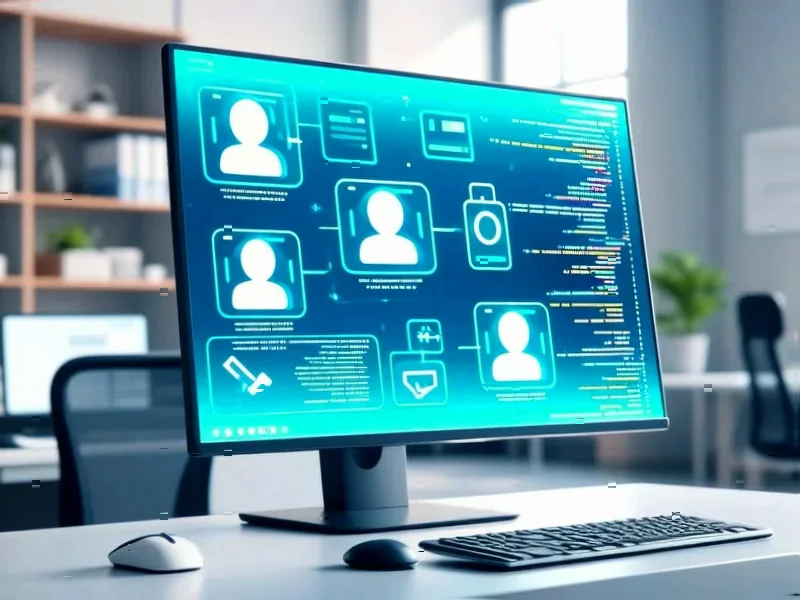According to TheRegister.com, YouTube’s AI moderation system has begun removing videos demonstrating Windows 11 workarounds, including how to install the operating system using local accounts or on unsupported hardware. Tech YouTuber Rich White (CyberCPU Tech) first reported the issue on October 26 after his tutorial on installing Windows 11 25H2 with a local account was removed under YouTube’s “harmful acts” policy. The automated system allegedly claimed the content could lead to “serious harm or even death,” with appeals being denied within minutes, suggesting no human review. At least two other creators—Britec09 and Hrutkay Mods—experienced similar removals, despite the workarounds being neither illegal nor dangerous when followed correctly. This automated crackdown raises serious questions about AI moderation effectiveness.
Table of Contents
The Fundamental Flaws in AI Content Moderation
What we’re witnessing here represents a classic case of AI systems struggling with contextual understanding. While artificial intelligence excels at pattern recognition, it fundamentally lacks the nuanced understanding required to distinguish between genuinely harmful content and legitimate technical tutorials. The system appears to be flagging any content that involves “bypassing” or “circumventing” security measures without comprehending that these Windows 11 workarounds don’t actually compromise system security or enable malicious activities.
The speed of appeal rejections—sometimes within one minute for 17-minute videos—strongly suggests these decisions aren’t receiving meaningful human review. This creates a dangerous precedent where creators face permanent consequences based solely on algorithmic judgments. The problem extends beyond Windows tutorials to potentially affect any technical content involving workarounds, customizations, or modifications that an AI might misinterpret as “circumventing security.”
Microsoft’s Changing Position on Installation Flexibility
This situation occurs against the backdrop of Microsoft’s increasingly restrictive approach to Windows 11 installation requirements. The company has been systematically closing loopholes that allowed users to bypass hardware requirements and Microsoft account mandates. In February, Microsoft removed its own documentation about installing Windows 11 on unsupported hardware, and recent Insider builds have eliminated the local account workaround during setup.
While there’s no evidence of Microsoft directly influencing YouTube’s moderation decisions, the timing is certainly noteworthy. Microsoft’s business interests clearly align with pushing users toward newer hardware and deeper integration with Microsoft accounts. However, the workarounds being targeted represent legitimate user choices rather than security threats—they simply allow users to maintain privacy preferences or extend the life of existing hardware.
The Chilling Effect on Technical Content Creation
The real damage here extends far beyond a few removed videos. As White noted in his follow-up video, creators are already self-censoring content out of fear of triggering automated systems. This creates a chilling effect that could significantly reduce the availability of advanced technical tutorials and workarounds that have long been valuable resources for the tech community.
What makes this particularly concerning is the lack of clear communication from YouTube about what specifically violates their policies. Without transparent guidelines, creators are left guessing about what content might jeopardize their channels. This uncertainty could push technical content toward safer, more basic topics, ultimately reducing the platform’s value as an educational resource for advanced users and IT professionals.
Broader Implications for Platform Governance
This incident highlights a growing crisis in content moderation at scale. As platforms rely increasingly on AI systems to manage massive volumes of content, we’re seeing consistent patterns of over-removal and inadequate appeal processes. The problem isn’t unique to technical content—similar issues have affected educational content, historical footage, and legitimate political discourse.
The fundamental issue is that AI systems are being tasked with interpreting complex human contexts they simply cannot comprehend. When a system can’t distinguish between a dangerous hack and a legitimate customization tutorial, it becomes unfit for purpose. Platforms need to invest in hybrid approaches that combine AI efficiency with human judgment, particularly for content categories where context is everything.
The Path Forward for Platforms and Creators
What creators like White are asking for isn’t unreasonable—they simply want clarity and consistency. If YouTube has implemented new policies regarding technical workarounds, they need to communicate these changes transparently. If this is an AI error, they need to acknowledge and correct it while improving their appeal processes.
The solution likely involves creating specialized moderation pathways for different content categories. Technical tutorials require reviewers with technical expertise, not general-purpose moderators or algorithms. Platforms could develop category-specific AI models and human review teams that understand the nuances of their assigned content types. Without these improvements, we risk seeing valuable educational content disappear while genuine harmful content continues to evolve beyond algorithmic detection.
Related Articles You May Find Interesting
- Windows 11 25H2 Preview Brings Shared Audio, Gaming Upgrades
- AI Cracks Ferroelectric Code: 20-Second Phase Diagrams Transform Materials Science
- ChatGPT’s Meteoric Rise: From 300M to 800M Users in One Year
- Nintendo’s $17.5K Legal Victory Against Pirate Streamer Sends Warning
- Nuclear Breakthrough: Scientists Confirm Decades-Old Atomic Decay Theory



